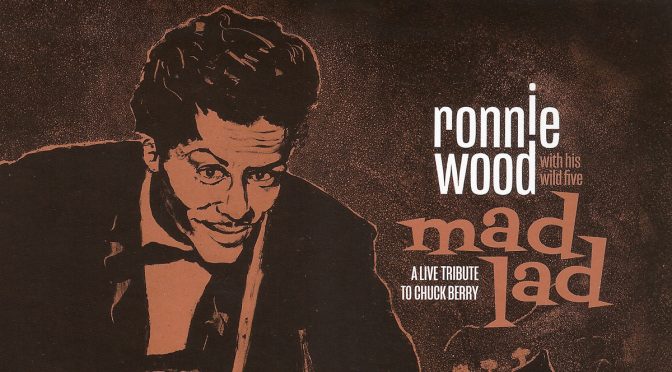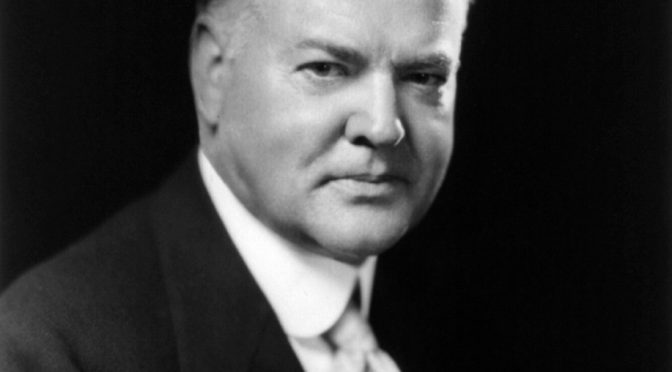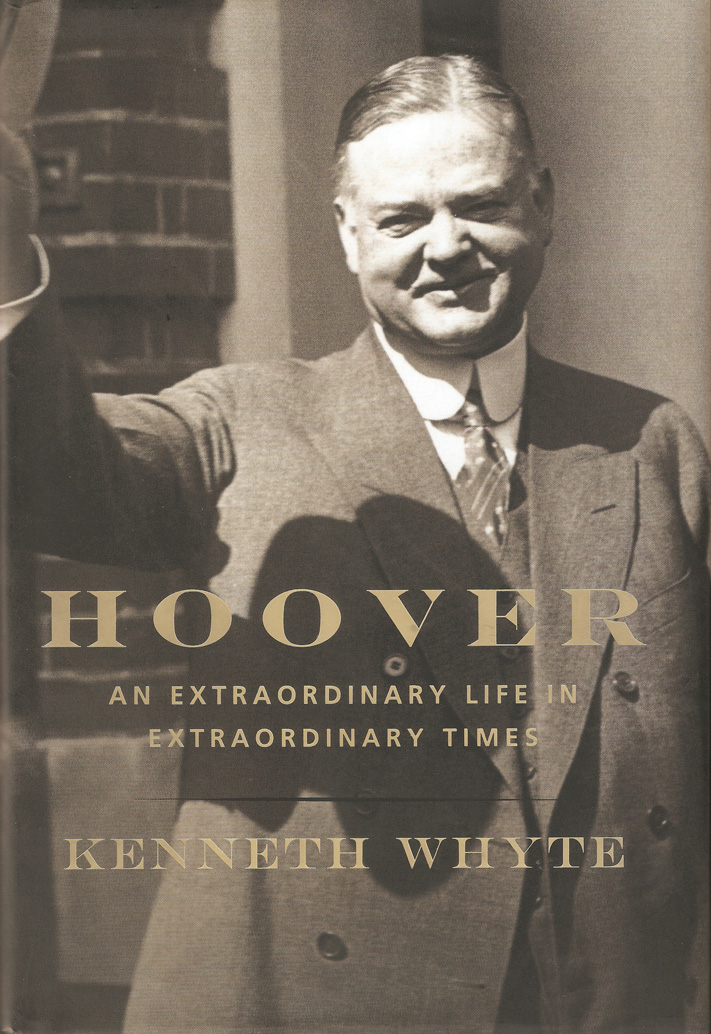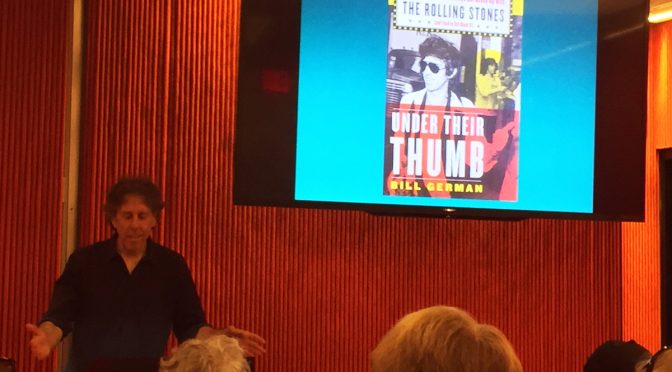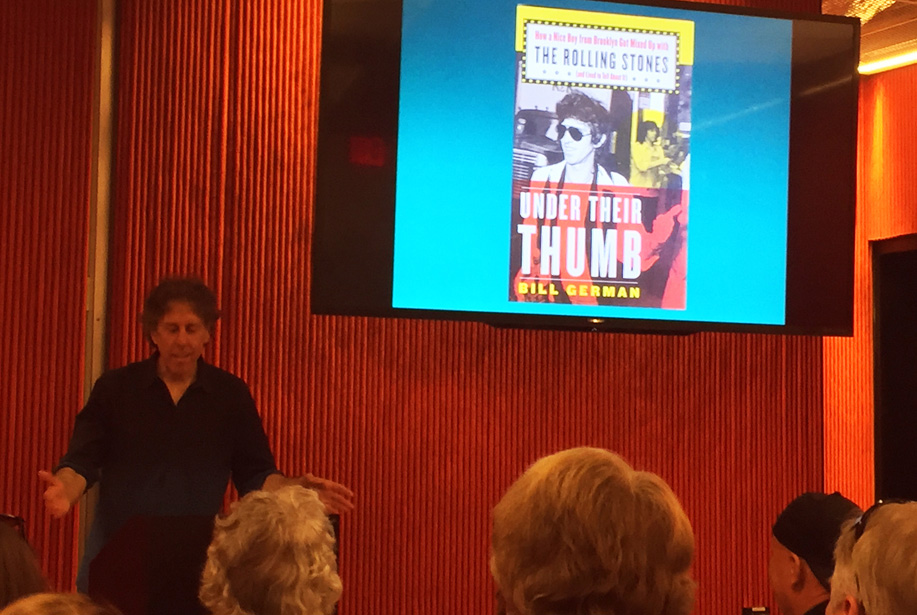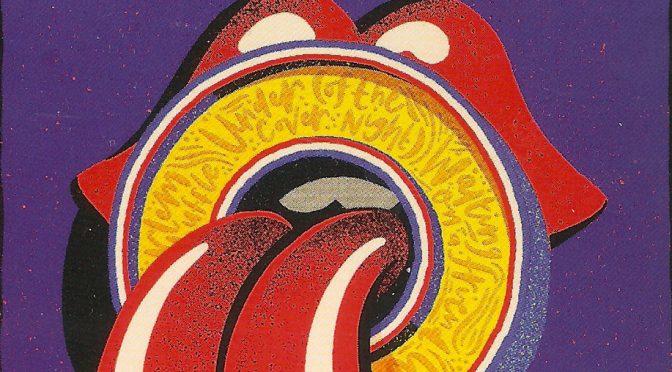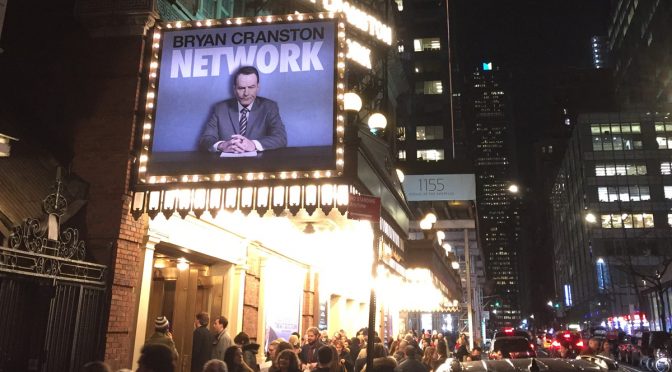The best way to remember Charlie Watts is by listening to his music.
Tag Archives: music
Lena Horne
If you happen to have the soundtrack to the 1994 film “The Adventures of Priscilla, Queen of the Desert,” then play Track 8, “A Fine Romance,” in which the singer laments being in a relationship with a partner who does not reciprocate in the physical affection department. It’s a snappy little song with clever lyrics that are made even more interesting by the way they are delivered, by the one-and-only Lena Horne. She’s completely in command, and the orchestra sounds fantastic. It’s one of hundreds of songs this wonderful singer recorded over many decades.
Lena Horne had a long career in Hollywood movies, on the Broadway stage, on television, as a performer in nightclubs, and as a recording artist. She was not the first black actress to appear on the big screen, but she was the first to be given the Hollywood glamour treatment. She was definitely a groundbreaker. Sadly, racism touched just about every aspect of her life and work.
Lena Horne was born in Brooklyn to a large, privileged family that was presided over by her maternal grandmother. But when Lena was very young her mother, an aspiring singer and actress, took her away to travel with her as she sought work as a performer. Her mother often left young Lena to live for weeks or months at a time with various friends and relatives. It must have been difficult for such a young girl.
When she was still in her teens Horne got a job performing in the chorus at the Cotton Club, up in Harlem. All the performers were black, and all the patrons were white. The black performers had to come in the back door, and if black relatives of the performers came to see the show they had to sit at a “family table,” which was of course in the back next to the kitchen.
From there Horne went on tour with a traveling orchestra and eventually went out to L.A. and performed at the Café Trocadero. Soon after, with the help of Walter White of the NAACP, she signed a contract at MGM to appear in movies. This was a big deal back then, because it was the Golden Age of Hollywood and the major studios were at the peak of their creative output. White wanted to use Horne to help improve the image of black people in movies, promising that she would never have to play a maid. But to Horne’s disappointment she was not destined to be a big star with leading roles. She appeared in about a dozen films for MGM, mostly in the 1940s. She could be given one song to perform that had nothing to do with the plot. This made it possible for her appearance in a movie to be edited out when it was shown in the racist South.
Eventually Horne stopped making movies and instead developed her nightclub act. She got really good, too, performing in some of the best rooms, including the Sands in Las Vegas and the Waldorf-Astoria in New York. She recorded live albums at these venues that were commercially successful. She also recorded dozens of studio albums, and while those were not always commercially successful, they were almost always artistically successful. She had learned to put emotion into her songs. It’s just a hunch on my part, but I’m thinking that in the recording studio many years after she left Hollywood and she was singing “A Fine Romance,” she was not lamenting a lover but rather her experience at MGM. She was hoping for fireworks but instead got bottle rockets.
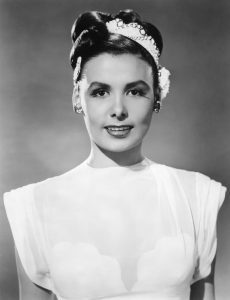
In the 1960s Horne got involved in the civil rights movement. The new president, John F. Kennedy, was dragging his feet on helping Americans who were black, and leaders from the NAACP and other groups began holding the administration’s feet to the fire. They demanded a sit-down, and Horne participated in a meeting in New York City with black activists and Attorney General Bobby Kennedy. She also traveled to Jackson, Mississippi, where she met Medgar Evers and participated in a rally organized by the civil rights leader. On this trip she also met with a group of black children who were learning how to defend themselves against beatings by racist cops, and she sang at a church concert. Less than a week later Horne was waiting in the ABC studios, about to go on the “Today” show with Hugh Downs, when she learned, just moments before airtime, that Evers had been murdered. It was difficult for her to keep her composure.
Horne also took part in the March on Washington in 1963, when Martin Luther King Jr. gave his memorable speech. Horne did not give a speech herself, but she did go to the microphone to shout the word “Freedom!” so that marchers knew that she was there.
Also during the 1950s, ’60s and ’70s, Horne appeared on various television shows, including “The Ed Sullivan Show,” “The Judy Garland Show,” “The Muppet Show” and “Sesame Street.” She returned to the big screen in 1978, in “The Wiz,” playing Glinda. And she continued to record many albums.
I learned all this reading “Stormy Weather: The Life of Lena Horne,” an all-encompassing, 500-page biography by the author and journalist James Gavin, who has written many highly regarded books, including one on Chet Baker and another on the history of New York’s cabaret scene. I happen to be personally acquainted with the author. We’ve stayed at the same house at Fire Island. His knowledge about 20th Century popular American music is unrivaled by anyone I’ve ever met. He’s the kind of person who has never walked or driven past a record store without going inside. His music collection is legendary. For me it was great fun to read about Lena Horne in a book written by someone I know! He patiently and graciously answered many questions I had.
For me, some of the highlights of the book included the author’s description of what the Cotton Club was like. He also describes aspects of the studio system that existed in Hollywood back in that era, and he includes in-depth details such as what type of makeup was used on Horne’s complexion for filming. He leaves nothing out. The book includes a number of really nice photographs of Lena Horne taken throughout her life. In most of the pictures, at least to my eye, she looks like she is having a good time, especially when she is with her daughter, Gail.
The author also includes a discography and a filmography at the back. I found myself flipping back and forth quite a bit. Several times I found myself looking up scenes from some of the movies in which Horne appeared on YouTube. And more than once I ordered some of her albums from Amazon. When playing one of these CDs, a Collectibles version of “At the Waldorf Astoria” and “At the Sands,” which were recorded in front of her live audience (of mostly rich white people), I can literally hear the emotions described by the author in her voice. For anyone who is a fan of Lena Horne or who would simply like to learn more about this important American artist, I can’t recommend this book enough.
Here are some additional notes from this excellent biography:
- Lena Horne was married twice and had two children, a son and a daughter, with her first husband.
- Her second husband was Lennie Hayton, who was white and Jewish. He was a bandleader, and they worked together. As an interracial couple, they faced housing discrimination in Los Angeles and in New York City.
- She worked hard on her singing and was constantly improving.
- She had a fiery temper.
- She often went to the movies alone.
- When she was first hired at MGM and went to get her hair done, a hairdresser refused to work on her because she was black.
- Also in Hollywood, she met Hattie McDaniel and Butterfly McQueen, who had both been in “Gone With The Wind.”
- She was investigated by the House Un-American Activities Committee.
- She had flings with many fellow celebrities, including Orson Welles, Joe Louis and even Vincente Minnelli!
- Her close friends included Ava Gardner.
- She was in a Broadway musical with Ricardo Montalban.
- She admired the singing of Aretha Franklin.
- During World War II, Horne entertained in various USO shows and was infuriated when white German POWs were seated in the front and black U.S. service members in the back.
- Also during the war years, Horne paid multiple visits to Tuskegee, Alabama, to support the Tuskegee Airmen, the courageous group of black fighter pilots. She made several trips at her own expense and on her way home from one particular visit she stopped at an airport diner but was denied service because she was black. But that didn’t stop a boy from the kitchen from asking for her autograph as she was leaving, which she gave him.
- On a dinner date once with her husband at a fancy establishment, she threw an ashtray at a guy who called her a racial slur, clobbering him and causing him to bleed from the head. The incident got in the papers the next day.
- When she appeared in “The Wiz,” the director, Sidney Lumet, was her son in law!
- Lena Horne recorded the song “A Fine Romance” more than once. The version I like, the one on the Priscilla soundtrack, is from her 1988 album “The Men in My Life.”
- The title of the book comes from the song “Stormy Weather,” which Horne performed in a film of the same name. It was her signature song.
In the early 1980s Horne did a one-women Broadway show, “Lena Horne: The Lady and Her Music,” which was a big hit. As the author explains, this was her version of her story, told the way she wanted to tell it, which was not 100 percent accurate in all aspects. But the audiences loved it, and Horne took the show on tour and also filmed it for TV. It turned into a “victory lap” of sorts, allowing her to put a nice exclamation mark on her long career as an entertainer. At the 1981 Tony Awards ceremony she received a special award for her show and then performed “Believe in Yourself,” her song from “The Wiz.” This is easy to find on YouTube. It’s a powerful performance that brings a tear to my eye no matter how many times I watch the clip.
Lena Horne took me away from the U.S. presidents for a while, but I sure am glad I took the time to read about her. What a remarkable life she had. Speaking of the presidents, she lived long enough to see Barack Obama elected!
The lyrics to ‘Honky Tonk Women’
Oh no! I just found out I was singing this song wrong! “It’s the honky tonk women that give me the honky tonk blues” — I was missing the “that”!
Ron Wood pays tribute to Chuck Berry
On a sizzling new live album, Rolling Stones guitarist Ronnie Wood pays tribute to Chuck Berry. It’s called “Mad Lad: A Live Tribute to Chuck Berry.” Ronnie Wood plays guitar on all the songs, and he sings on most of them. I’m not the biggest fan of Ronnie Wood on lead vocals, because his singing voice reminds me more of Bob Dylan than Mick Jagger. But his guitar playing is fantastic, and his band is really tight. They are billed as Ronnie Wood With His Wild Five. The album was recorded at a small theater in Dorset, England.
The CD opens with “Tribute to Chuck Berry,” a song by Wood, followed by the Chuck Berry covers. Many of the songs are instantly recognizable, while others are lesser known. Some of them, including “Talking About You” and “Little Queenie,” have been recorded by the Stones. “Wee Wee Hours” features Imelda May on vocals with Ronnie Wood and is the CD’s best song. Other standouts include “Almost Grown,” which is Ronnie’s best vocal of the evening, “Blue Feeling,” “Rock and Roll Music” and “Mad Lad,” the album’s title track, which is an instrumental. But all the songs are fantastic. If you’re a Stones diehard like me, this album is a must for your collection!
Herbert Hoover
He tried so hard to pull our country out of the worst economic disaster it ever experienced before or since, what would become known as the Great Depression. Even before the Wall Street crash of October 1929, which came just months after his inauguration, Herbert Hoover knew the stock market was a speculative bubble. He had taken steps to address this, but few would listen. After the crash he immediately called captains of industry to the White House and got them to promise not to implement massive layoffs or pay cuts. He also persuaded union leaders to agree not to stage any labor protests or strikes during this time of crisis. His efforts worked for a while, but soon it became evident that this was more than just a cyclical recession.
It was really a problem with worldwide dimensions. It was brought about by factors that included a massive global trade imbalance, poor international monetary policy, and how governments were maintaining or not maintaining a gold standard. It was all complicated by the massive debts and reparations owed after the war in Europe. The depression was much worse overseas, and in Germany the government was about to collapse. Here at home, Hoover got Congress to agree to a moratorium on German debt and reparations payments. He also called for private relief through organizations like the Red Cross. And he encouraged state and local governments to implement local infrastructure projects to help spur employment.
But when Britain abandoned the gold standard it set off another round of misery here, causing massive bank failures. Hoover gathered the nation’s top banking executives to Washington to establish what would become the Reconstruction Finance Corporation (RFC), which was an effort designed to keep credit flowing and banks liquid. Finally, thinking that the economy was soon to improve, Hoover set out to raise taxes and cut spending in an effort to balance the federal budget and thus demonstrate that the government was on solid footing.
When Hoover implemented these measures, the economy would perk up for a few months at a time, only to fall off again. There seemed to be no end in sight to the misery. It’s therefore no surprise that Hoover became a one-term president. In the election of 1932, New York Governor Franklin Delano Roosevelt beat Hoover decisively, winning 472 electoral votes vs. 59 for Hoover, and getting 57.4 percent of the popular vote to Hoover’s 39.7 percent.
Today’s book report is on “Hoover: An Extraordinary Life in Extraordinary Times” by Kenneth Whyte. It’s a fitting title for someone who was active in public life not only during the Great Depression, but also during both World War I and World War II, and the start of the Cold War. At more than 600 pages with thoughtful insight and analysis, I found this book a pleasure to read. It’s certainly one of the best presidential biographies I have yet encountered. I learned so much, not only about Hoover but also about the momentous times in which he lived.
Elected to our nation’s highest office in 1928, Herbert Hoover was our nation’s 31st president. He was a Republican who had never before held elective office. But he was no stranger to the federal government, having served in three previous administrations.
A native of West Branch, Iowa, Hoover was the first president born west of the Mississippi. He was also the first Quaker to be elected president. He was orphaned when he was just 9 years old and was sent to live with relatives in Oregon. His early childhood trauma likely affected his emotional development, leading to lifelong social awkwardness and an inability to connect with others on a human level. He didn’t like “glad handing” or kissing babies as so many other politicians do. He was among the first students to attend Stanford University, where he studied engineering. After college he got a lucrative job working for a British mining company, and he traveled to Australia and China to develop mines. He was really good at this, and he made tons of money for the company and for himself. He eventually settled in London, where he started his own firm.
In business Hoover had developed immense organizational and managerial abilities, and when war broke out in Europe he put these talents to use, first by helping Americans stranded abroad get home safely, and then later by organizing massive humanitarian relief for the people of Belgium, who were starving. After the war, Hoover joined President Woodrow Wilson’s delegation to the Paris peace talks and later organized more humanitarian relief, this time for all of Europe. President Warren G. Harding, who was elected in 1920, gave Hoover a cabinet post — Secretary of Commerce — and he stayed on in that post under Calvin Coolidge after Harding died in office.
Hoover was an excellent commerce secretary. In an effort to streamline business activity and eliminate waste, he gathered and published immense amounts of data and called for improvements to the nation’s infrastructure as well as preservation of natural resources. He helped get the Radio Act of 1927 signed into law under Coolidge, which regulated and helped organize the nation’s airwaves. Importantly, Hoover also set out to standardize construction materials and consumer products, everything from screws to bricks to automobile tires and even baby bottles. According to the book, Hoover’s standardization of home building materials reduced the price of a new house by a third, making home ownership more achievable for many Americans.
These initiatives all fit in with Hoover’s worldview, that government should help foster business growth and stability without intervening directly. In other words Hoover was not a laissez faire capitalist, nor could be he called a socialist. He was rather a champion of a so-called “third alternative.”
When a great flood of the Mississippi River caused widespread devastation in 1927, Hoover performed the duties of what a good FEMA director would do today, organizing relief efforts and saving many lives and livelihoods. He relied in large part on private donations.
In 1928, after Coolidge declined to seek another presidential term, Hoover received the Republican Party nomination. He won in a landslide, receiving 444 electoral votes to 87 for the Democratic nominee, Al Smith of New York. The popular vote in 1928 was 58.3 percent for Hoover and 40.8 percent for Smith.
When Hoover began his term of office the first thing he did was get in a huge fight with Congress — over tariffs! The Republicans controlled both houses, but Hoover lacked the political savvy and the inside connections needed to get legislation through. In the midterm elections of 1930, the Democrats gained seats in the House but the Republicans maintained control. Then late in Hoover’s term several Republican representatives died, causing power in the House to flip to the Democrats. Interestingly, when this happened Hoover was able to get legislation passed more easily.
Hoover was president during the Prohibition era. Early in his presidency Hoover convened a commission to study the issue, but when it recommended that the Volstead Act, which was the federal government’s enforcement mechanism against booze, be revised, and Prohibition itself be revisited, Hoover did not act. To his credit, Hoover had wisely called Prohibition an “experiment” in the 1928 campaign, but at heart Hoover was more of a “dry.” In the election of 1932 the Democratic Party platform called for outright repeal of the 18th Amendment, and FDR campaigned on repeal. This might have contributed to FDR’s lopsided victory over Hoover.
As a former president, Hoover lived for many more decades and continued to serve his country. He chaired two Hoover Commissions, one under President Truman and one under President Eisenhower, to help eliminate redundancies in the administrative branch and to help make the federal government run more efficiently.
After leaving office Hoover lived for a time in a large house in California, but he eventually moved to New York City, living in a suite at the Waldorf Astoria Hotel. He died in 1964 at age 90, outliving both FDR and JFK.
Also after his presidency, Hoover spoke out publicly and privately against FDR. In my view, some of Hoover’s criticism of his successor was sour grapes, but in other respects it was warranted. Hoover thought that FDR should not have let the United States recognize the Soviet Union, and he was infuriated that so many people ended up living under an iron fist after the second world war. Hoover also was troubled by the New Deal, thinking that the federal government was getting too big and interfering too much in industry. According to the book, the elder statesman Hoover became the spiritual godfather of the modern conservative movement, influencing thinkers such as William F. Buckley Jr.
Nevertheless, after the Depression Hoover was branded a failure, and that sentiment lasted for many generations. This may or may not have been fair. I tend to think that it was unfair. In 1932 and in his subsequent presidential campaigns, FDR and his Democratic Party had been especially nasty toward Hoover. As part of a Democratic Party smear campaign, shantytowns during the depression were dubbed Hoovervilles — a term that continued to be used even during FDR’s many years of being president during the Depression.
This blaming the Depression on Hoover even carried over into popular culture. For example, the Broadway musical “Annie” features a song called “Thank you Herbert Hoover,” which is a sarcastic thank you. And in the popular song “I’m Still Here” by Sondheim, from the show “Follies,” a woman of a certain age reflects on her life, remembering living through the Depression and many other ups and downs. “I lived through Herbert and J. Edgar Hoover, that was fun and a half,” she sings. “When you’ve lived through Herbert and J. Edgar Hoover, everything else is a laugh.”
It must have been difficult to be Herbert Hoover, especially during the FDR years. He was unpopular, yet, according to the book, when everyday Americans encountered him they wanted to shake his hand. Sadly, Hoover was not emotionally capable of reciprocating these affections.
Here are some additional facts about Herbert Hoover:
- He married Lou Henry, and they had two sons, Herbert Jr. and Allan. Lou Hoover was an extraordinary woman in her own right. She had been a tomboy. In a picture included in the book, she resembles Annie Oakley! She rode horses and drove cars. She even drove coast to coast by automobile through the Rocky Mountains, at a time when there were few paved roads. The trip took a month. She preceded her husband in death by many years.
- Speaking of the song mentioned above, Herbert Hoover was not related to longtime FBI director J. Edgar Hoover.
- Those who are old enough might also recall Hoover being affectionately recalled in “Those Were the Days,” the theme song for the long-running TV show “All in the Family.”
- He had a brother and a sister.
- He was a hard worker.
- He smoked lots and lots of cigars.
- He was bad at spelling.
- He had a habit of jangling coins in his pocket.
- He enjoyed fishing in the Florida Keys, always while wearing a jacket and tie!
- Also not related to longtime White House usher Ike Hoover.
- Also, there was no connection to the vacuum cleaner.
- But the Hoover Dam, however, is named after the 31st President.
- He founded the Hoover Institution at Stanford.
- He also invented a game, called Hooverball, in which he would throw a medicine ball with colleagues on White House grounds, for exercise.
- He was in China during the Boxer Rebellion.
- He was not implicated in any of the scandals that befell the Harding administration.
- He was uncomfortable with ceremonial duties, and he was not good at face-to-face interactions with the general public, or at working crowds.
- He wrote many books, the most notable of which included “The Ordeal of Woodrow Wilson,” about the Paris peace conference after World War I.
And that’s Herbert Hoover. Before reading Whyte’s excellent biography, I knew almost nothing about the man. I found his life to be absolutely fascinating. As the author pointed out, Herbert Hoover knew every president from Theodore Roosevelt to Richard Nixon and served under five of them, both Democratic and Republican, in addition to his own term in the White House.
Even more importantly, the author estimates that during his lifetime Hoover saved 100 million lives, through his humanitarian work during and after World War I and later after the Mississippi flood of 1927. That’s something to admire. I am so glad I took the time to learn more about this important American and his many achievements.



Bill German at the New York Public Library
Longtime Rolling Stones insider Bill German presented a talk today at the New York Public Library on West 53rd Street. As many Stones fans know, Mr. German wrote and edited a newsletter about the band for many years. He went on tour with them, he hung out backstage and was welcomed into their homes and hotel rooms. He subsequently wrote about his adventures in a page-turner of a book that he cleverly titled “Under Their Thumb: How a Nice Boy From Brooklyn Got Mixed Up With the Rolling Stones (and Lived to Tell About It).” Bill also collaborated on a book with Ron Wood about Mr. Wood’s paintings and drawings.
 In my opinion, “Under Their Thumb” is the best book about the Stones — and trust me, I have read many books about the Stones. And in addition to being a gifted writer, Bill is also a terrific public speaker. This was my second time hearing him tell his story. Bill does impersonations of Mick, Ron and Keith, and the way Bill does this you really feel like you are there. During his presentation today, Bill shared pictures and fun anecdotes, including what it was like to hang out in Ron Wood’s basement when people like Stevie Ray Vaughn would pop by at 3 a.m., Keith’s hosting a “lunch” at 8 p.m. — and what happened when he spilled orange juice on Mick Jagger’s rug!
In my opinion, “Under Their Thumb” is the best book about the Stones — and trust me, I have read many books about the Stones. And in addition to being a gifted writer, Bill is also a terrific public speaker. This was my second time hearing him tell his story. Bill does impersonations of Mick, Ron and Keith, and the way Bill does this you really feel like you are there. During his presentation today, Bill shared pictures and fun anecdotes, including what it was like to hang out in Ron Wood’s basement when people like Stevie Ray Vaughn would pop by at 3 a.m., Keith’s hosting a “lunch” at 8 p.m. — and what happened when he spilled orange juice on Mick Jagger’s rug!
The room was filled with dozens of serious fans who, like me, were hanging on to Bill’s every word. Before and after the presentation, Bill spoke with his fellow Stones fans and signed copies of his books. I picked up extra copies of both the books that he had available, which I will be sending along to out-of-town friends and fellow Stones devotees Gary and Steve. Bill was gracious enough to sign these. He also answered all questions from those in attendance. I had a question of my own I wanted to ask, but I will ask that of Bill another day.
Still Life: American Concert 1981
In 1981, the Rolling Stones were at the top of their game. They had a No. 1 album, “Tattoo You,” from which the first single, Start Me Up, was a smash hit on the radio. They also had videos running constantly on a brand new cable station called MTV. The band’s tour that year was arguably the biggest any rock band ever done to date, filling large outdoor stadiums and sports arenas, including the Pontiac Silverdome. (I happened to be just starting high school at the time, and was therefore too young to go to the show.) Opening acts for the Stones that tour included Journey and George Thorogood. With the exception of bass player Bill Wyman, the lads were all still in their 30s. Mick Jagger, trim and fit and with long hair, wore football pants and performed shirtless through much of the show. Then for the encore (usually the song Satisfaction, some nights Street Fighting Man), he would come out on stage wearing a colorful cape made of the British and American flags sewn together. He sang into a cordless microphone, which he stuffed into his crotch while running about the stage during the instrumental bits.
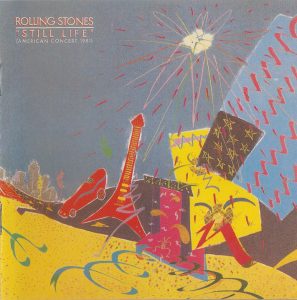 Documenting this tour was a live album, released the following year, called “Still Life: American Concert 1981.” This is not considered one of the best Rolling Stones albums, but it was the first one that I ever bought. I got it at Meijer Thrifty Acres. I remember the DJ Allison Harte talking about the album on WLAV when it came out and playing songs from it. I also remember that at first I was not hugely impressed. My biggest complaint was the album’s length. It was just 10 songs! For some reason I thought this was a recording of a complete concert. I wondered what kind of band would only play for 45 minutes? It was not until years later that I learned that the Stones played 25 or more songs on that tour, for close to three hours each night.
Documenting this tour was a live album, released the following year, called “Still Life: American Concert 1981.” This is not considered one of the best Rolling Stones albums, but it was the first one that I ever bought. I got it at Meijer Thrifty Acres. I remember the DJ Allison Harte talking about the album on WLAV when it came out and playing songs from it. I also remember that at first I was not hugely impressed. My biggest complaint was the album’s length. It was just 10 songs! For some reason I thought this was a recording of a complete concert. I wondered what kind of band would only play for 45 minutes? It was not until years later that I learned that the Stones played 25 or more songs on that tour, for close to three hours each night.
At some point I was in my room playing the record with all the lights off (as I did back then) and it was one specific moment in the song Twenty Flight Rock, where the other members of the band give a brief pause while Mick sings a line, that got me. I can’t explain it. It was something about the band’s ability to do that, to be so precise, so tight, that got me hooked. I learned later that Twenty Flight Rock was an Eddie Cochran song that the Stones were doing a cover version of. They also did a cover of the Smokey Robinson and the Miracles song Going to a Go-Go, which got airplay on the radio and on MTV. But it was the song Twenty Flight Rock, all one minute and 45 seconds of it, that initiated my love for the Rolling Stones.
Here are a few additional notes about the 1981 Stones tour and the “Still Life” album:
- The album contains an “intro” of Duke Ellington’s Take the A Train and an “outro” of Jimi Hendrix’s rendition of the Star Spangled Banner from Woodstock. Both the intro and outro were played at the concerts, the latter as fireworks exploded over the crowd.
- The album artwork is by the Japanese artist Kazuhide Yamazaki, based on his colorful stage backdrops used on the tour.
- In addition to the album, there was also a concert movie, directed by Hal Ashby, called “Let’s Spend the Night Together,” which was filmed at the 1981 Stones shows at Sun Devil Stadium in Tempe, Ariz., and at the Brendan Byrne Arena in East Rutherford, N.J. The movie came out in 1983 and was shown in movie theaters.
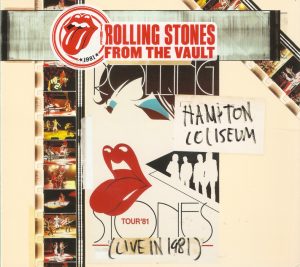 There was also a televised pay-per-view special with radio simulcast for the final show of the tour, at Hampton Coliseum in Hampton, Virginia. In 2014, this concert was released as a CD/DVD set, titled “From the Vault: Hampton Coliseum (Live in 1981).”
There was also a televised pay-per-view special with radio simulcast for the final show of the tour, at Hampton Coliseum in Hampton, Virginia. In 2014, this concert was released as a CD/DVD set, titled “From the Vault: Hampton Coliseum (Live in 1981).”- Following the 1981 tour of the USA, the Stones went on a big tour of Europe in 1982. They did not tour again until 1989.
If you get the “Still Life” album, listen to the song Twenty Flight Rock and let me know what you think. Also listen to the song Let Me Go (from their 1980 album Emotional Rescue, which opens Side 2) and tell me if you can count the number of different ways Mick sings the word “hey” and how he turns that one word into a whole sentence just about every time he sings it. You might also get hooked on the opening song, Under My Thumb, or by Shattered, or by Let’s Spend the Night Together, which is played with guitars rather than on piano.
And then there’s their live rendition of Time Is On My Side, which is played and sung with such emotion. By this time the Stones had been performing so long together that his song had real meaning for them and their fans, yet I was just starting to get to know them.
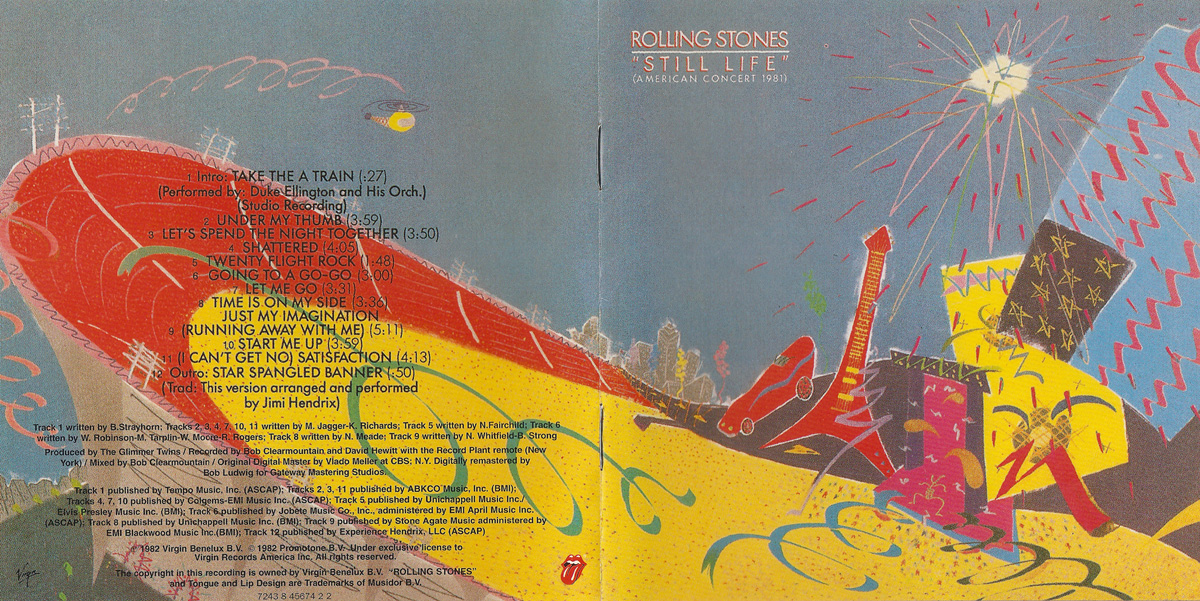
The latest greatest hits collection from the Stones
If you know me well you know that I will always stop a conversation to point out when a Stones song like “Tumbling Dice,” “Hot Stuff” or “Emotional Rescue” is playing, and I will never leave a car or bar when one of these songs is still playing. Therefore — although I already have all the songs included on “Honk” on other albums and in other collections — I still got this on the first day it came out. I love it.
The lads usually put these compilations out before they go on tour, if they have not released a new studio album. So this is one of their many “best of” albums. Others include “Made in the Shade,” “Hot Rocks,” “Rewind,” “Jump Back,” “The Singles Collection,” “GRRR!” and “40 Licks.”
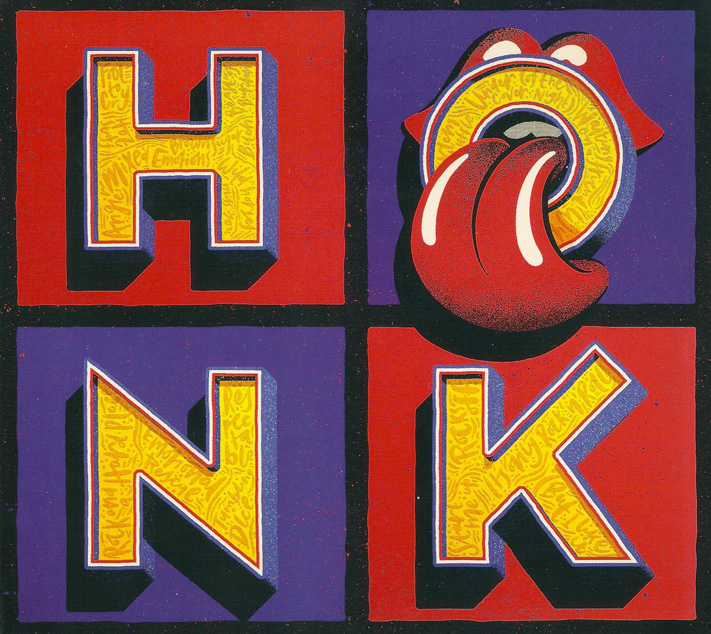 I got the three-CD edition of “Honk,” which includes two discs of “greatest hits” plus a bonus CD of songs recorded live, including several with special guests. What I like about this latest collection is its blend of big hits with some of their lesser-known songs. So, for example, on CD1 you get “Rocks Off” sandwiched between “Brown Sugar” and “Miss You.” CD2 includes some of their more recent but notable songs, including “Rough Justice,” “Rain Fall Down” and “Out of Control.” On CD3, the special guests on songs recorded live include Ed Sheeran on “Beast of Burden,” Dave Grohl on “Bitch” and Brad Paisley on “Dead Flowers.”
I got the three-CD edition of “Honk,” which includes two discs of “greatest hits” plus a bonus CD of songs recorded live, including several with special guests. What I like about this latest collection is its blend of big hits with some of their lesser-known songs. So, for example, on CD1 you get “Rocks Off” sandwiched between “Brown Sugar” and “Miss You.” CD2 includes some of their more recent but notable songs, including “Rough Justice,” “Rain Fall Down” and “Out of Control.” On CD3, the special guests on songs recorded live include Ed Sheeran on “Beast of Burden,” Dave Grohl on “Bitch” and Brad Paisley on “Dead Flowers.”
One song you won’t get on “Honk,” though, is “Honky Tonk Women.” That’s apparently because they are focusing on their studio albums released in 1971 and after. So, this is basically highlights from “Sticky Fingers” and thereafter.
If you don’t have any Stones albums and want to get just one, consider this one. The way I roll when I get a CD like this is stick it in and hit play, without looking at the packaging first to see what song is up next.
Last day of winter
Listen to “Winter” — one of my favorite songs from a much under-appreciated album:
Recent shows include ‘Hamilton,’ ‘Mockingbird’ and ‘Network’
Over the holiday break I caught a number of shows, starting with “Lifespan of a Fact” just after Christmas at Studio 54 on Broadway, starring Daniel Radcliffe, Cherry Jones and Bobby Cannavale, which I saw with my friend Franklyn.
Then New Year’s weekend, I attended a trifecta of shows, starting with “Sandra Bernhard: Quick Sand” at Joe’s Pub with my friend Bob; “Hamilton” also with Bob; and “To Kill a Mockingbird” starring Jeff Daniels, which I attended alone. It was my second time seeing “Hamilton,” which was a last-minute miracle. I won front row tickets for 10 dollars each on the official Hamilton app.
Then last Friday I caught “Network” starring Bryan Cranston at the Belasco with my friend Jay.



